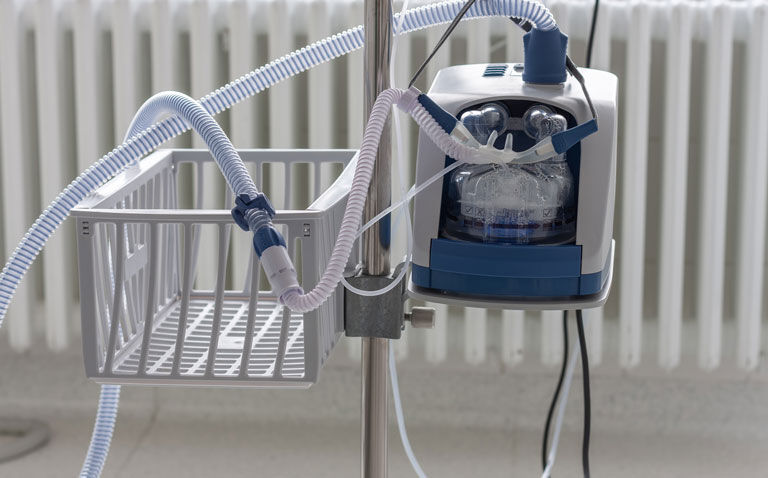Whether high-flow nasal cannula oxygen improves mortality in COVID-19 patients with respiratory failure was the subject of a recent RCT
The mortality benefit of high-flow nasal cannula (HFNC) oxygen therapy in those with COVID-19 and respiratory failure remains uncertain and was examined in a recent randomised trial by the SOHO-COVID Study Group.
According to a 2019 meta-analysis, in patients with acute hypoxaemic respiratory failure, high-flow nasal cannula oxygen flow, while not affecting mortality, was found to decrease the risk of requiring intubation or escalation of oxygen therapy. Moreover, a further study in critically ill patients with COVID-19 found that HFNC significantly reduced intubation and subsequent invasive mechanical ventilation but did not affect mortality. Other work among those with severe COVID-19 has also shown that HFNC significantly decreased need for mechanical ventilation support and the time to clinical recovery compared with conventional low-flow oxygen therapy. In contrast, data from the RECOVERY group found that the requirement for tracheal intubation or mortality within 30 days was not significantly different between an initial strategy of HFNO compared with conventional oxygen therapy. Prior to the pandemic, there has been conflicting data on the mortality benefits of HFNO in patients with acute respiratory failure. Some evidence indicates that there is a mortality benefit whereas other data suggests that in critically ill immunocompromised patients with acute respiratory failure, high-flow oxygen therapy did not significantly decrease day-28 mortality compared with standard oxygen therapy.
For the present study, researchers set out to establish if HFNO compared to standard oxygen impacted on 28-day mortality in patients with COVID-19 admitted to an intensive care unit (ICU). Individuals were randomised to HFNO or standard oxygen which was delivered through a non-rebreathing mask. The primary outcome was set as 28-day mortality and there were 13 secondary outcomes including, for example, the proportion of patients who required intubation.
High-flow nasal oxygen and 28-day mortality
A total of 711 patients with respiratory failure and a mean age of 61 years (30% female) were randomised to HFNO (357) or standard oxygen.
For the primary outcome, 28-day mortality occurred in 10% of those receiving HFNO and 11% of patients given standard oxygen and this difference was not significant (adjusted odds ratio, aOR = 0.78, 95% CI 0,48 – 1.28, p = 0.32).
Out of all the secondary outcomes, only the need for intubation at day 28 was significantly different between the two groups, favouring the use of HFNO (aOR = 0.65, 95% CI 0.48 – 0.89, p = 0.007).
The authors concluded that in patients with respiratory failure due to COVID-19, the use of high-flow nasal oxygen was no better than standard oxygen with respect to 28-day mortality.
Citation
Frat JP et al. Effect of High-Flow Nasal Cannula Oxygen vs Standard Oxygen Therapy on Mortality in Patients With Respiratory Failure Due to COVID-19: The SOHO-COVID Randomized Clinical Trial JAMA 2022










